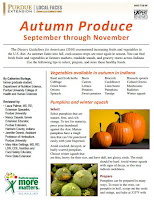Lawn Seeding
Indiana lawns contain primarily cool-season grasses, which grow best in the
cooler temperatures of spring and fall. During the hottest times of year, they
may grow very slowly or even go dormant. Kentucky bluegrass, perennial ryegrass,
tall fescue, and fineleaf fescue are common cool-season grasses.
Whether your lawn is thin from the rigors of
summer or from neglect, fall is the best time of
the year to improve your lawn. Some lawns can
be dramatically improved with proper fertilization
and weed control in fall; whereas others may
need reseeding in some areas or even complete
renovation.
Adequate soil moisture,
warm soil, and limited weed pressure allow for
excellent seedling growth. Between August 15
and September 15 is optimum seeding time
in the northern half of Indiana and Illinois, and
September 1 to September 30 is optimum in the
southern half of Indiana and Illinois.
Consider aerating the lawn area, punching 20 to 40 holes per square ft with the largest tines available. This will increase
the seed-soil contact and improve germination and
establishment rate. Apply a starter fertilizer (high in phosphorus) over
the entire lawn at 1.0 to 1.25 pounds of phosphate
per 1000 square ft of lawn.
Next, apply the seed to the lawn with either a drop-seeder
or a power over-seeder. Be sure to seed in both directions to adequately cover the lawn area with seed. Mulching the area will prevent erosion and conserve water. Therefore, mulching is most important when it is impossible to adequately irrigate newly-seeded areas.
Water the newly-seeded area three to four times
daily in order to keep the soil surface moist. Light,
frequent irrigation is the rule during the first few
weeks. Frequent mowing will limit the competition from the
established turf.
Four weeks after germination, apply 1.0 pound
of nitrogen per 1000 square ft of lawn using a fertilizer
containing N, P, and K.
Fertilization
Properly fertilized lawns
better tolerate stresses such as heat, drought, and
cold. Applying the right fertilizer at the correct
time helps turf plants accumulate and store the
essential plant foods that
are used for growth and development.
You should only apply the nutrients your lawn
needs. The nutrients plants need in the greatest
quantity are nitrogen (N), phosphorus (P),
and potassium (K). Of these, N has the most
impact on established lawns. N promotes green
color and overall growth, especially leaf growth.
Plants need P and K for strong root and stem
growth, which is most crucial when establishing
a new lawn
Established lawns will benefit most when
you apply the majority of N fertilizer from
late summer through autumn. This
promotes summer recovery, enhances shoot
density, maximizes green color, and prepares
the turf for winter, all without a growth surge. To promote maximum density during
late summer and early fall (late August through
early November), you should apply up to 1
pound of N per 1,000 square feet each month.
For more information on soil testing to help you choose the correct fertilizer,
look here.
Other tips to consider to help lower fertilization costs is to return grass clippings during mowing to the
lawn. These clippings contain valuable
nutrients that can be recycled into the soil. If you
must regularly remove clippings when you mow,
you may need to increase the amount of N you
apply each year by 25 to 50 percent to maintain
growth and color.







































